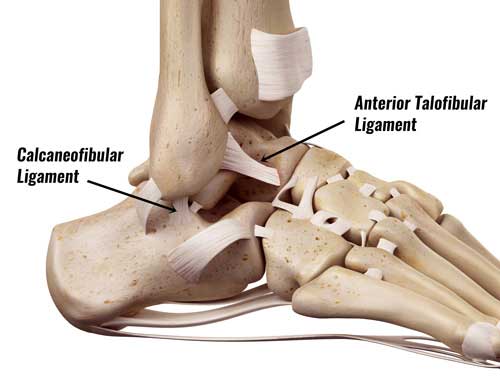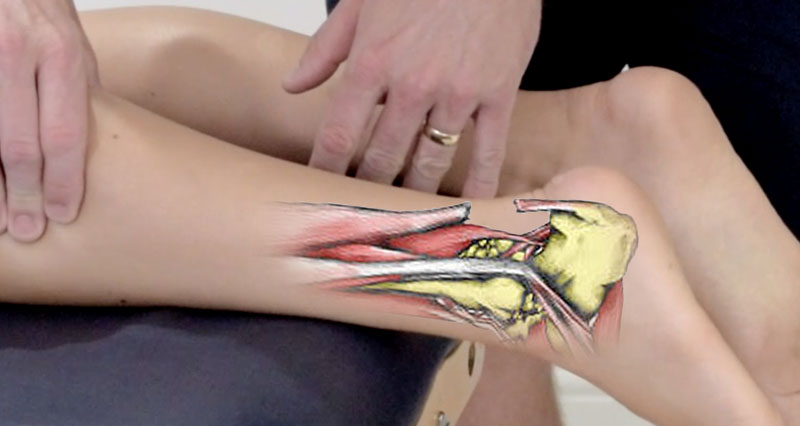The anterior drawer test checks the health of the anterior talofibular ligament (ATFL), a key ligament that helps keep the ankle joint stable. In particular, it prevents the talus bone from moving too far forward. The anterior drawer test helps evaluate ankle injuries, particularly from outward rolls that may stretch or tear the ATFL.

How to perform the anterior drawer test for the ankle
Start by positioning the patient either lying down or seated, with their knees bent at 90 degrees and the ankle in a neutral position. Next, secure the lower leg (tibia) with one hand and hold the foot with the other. Place your thumbs on the front of the ankle joint, just above the talus bone.

Then, begin by visually and manually inspecting the ankle. Focus on identifying any swelling, tenderness, or deformity, which could indicate a ligament injury. Subsequently, with the ankle still neutral, gently apply an anterior force to the heel using both hands. Simultaneously, stabilize the lower leg to push the talus bone forward, putting stress on the anterior talofibular ligament (ATFL).
Finally, as you apply this force, closely monitor how far the talus moves forward relative to the tibia. Ideally, the movement should be minimal, suggesting that the ATFL is stable.
What is a positive anterior drawer test?
To determine if the anterior drawer test is positive, observe the amount of forward movement of the talus bone when you apply a gentle anterior force to the heel while stabilizing the lower leg. If the talus moves forward excessively compared to the other ankle (assuming it’s uninjured), the test is considered positive, suggesting a possible injury to the anterior talofibular ligament (ATFL).
Considerations
A positive anterior drawer test, along with other clinical evidence and possibly imaging, can confirm an ATFL injury. Treatment options vary from the RICE protocol and bracing to physical therapy or surgery for severe cases.




